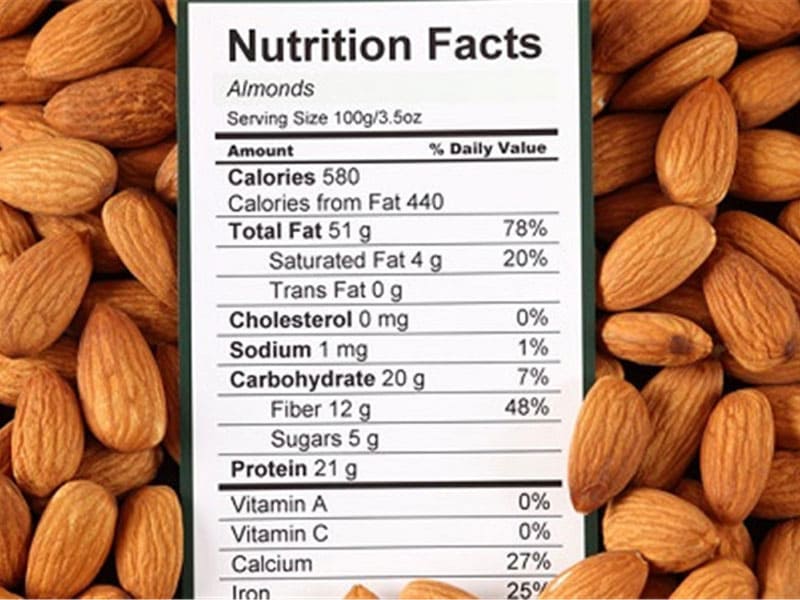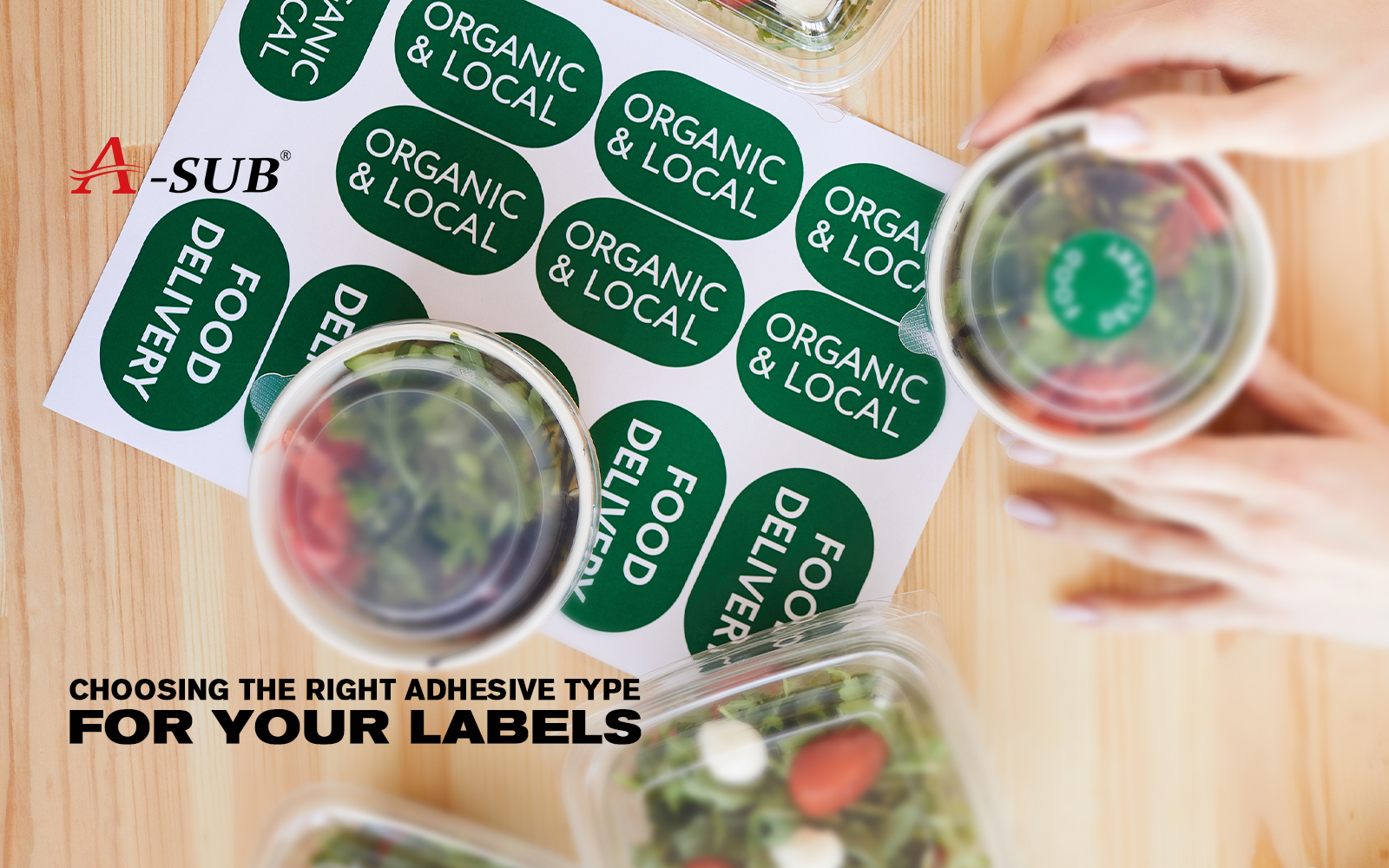Labels can be found everywhere in daily life. They usually consist of three parts, which are surface material, adhesive and backing paper.
I’m sure you know whether it looks better to choose white or clear labels for your products, but have you ever considered the choice of adhesive?
Different product applications require different adhesives, and the wrong choice may cause your labels to warp or even fall off and disappear.
In this article, we’ll take you through the eyes of A-SUB‘s labeling experts to analyze how to choose the type of label adhesive that’s best for your business, and help you grow your business!

Permanent Adhesives
Permanent adhesives are typically acrylic-based, offering excellent heat, weather, and chemical resistance. Once applied, they quickly develop strong, lasting bonds that resist removal. If peeled off forcefully, they often leave residue or damage packaging.
Therefore, if you must remove them, consult professional methods or experts. Permanent adhesives suit long-term fixed applications.
Typical Use Cases
- Product & Brand Labels: Ensures labels stay intact during shelving, shipping, and sales, maintaining brand consistency.
- Asset & Tamper-Evident Tags: Prevents malicious removal or tampering of equipment IDs and inventory tags.
- Shipping & Logistics: Withstands vibration, abrasion, and temperature extremes, preserving critical information.
- Warning & Safety Labels: Remains legible in harsh environments such as chemical plants or factories.
- Outdoor Labels: Provides UV and weather resistance for outdoor equipment and signage.
Removable Adhesives
Removable adhesives are usually formulated with hot-melt adhesives or emulsions, so it is easier to peel off labels with this material as the adhesive, and it is more suitable for short-term sticking or when the product status is not fixed.
However, its adhesion can be affected by factors such as heat and humidity, so it is recommended to keep the surrounding environment dry and cool when using it.
Of course, please note that no matter what type of adhesive is used, its stickiness will become stronger as the time of adhesion increases, and even if a removable adhesive is used, it will still be difficult to tear off after long time.
Typical Use Cases
- Price Tags & Promotional Stickers: Allows consumers to remove labels without damaging product surfaces.
- Medical & Laboratory Records: Enables flexible updates to test tubes, sample vials, and medical charts.
- Fruit & Vegetable Labels: Peels off before use without affecting food safety or appearance.
- Reusable Containers: Food boxes and display bins can be relabeled regularly without sticky leftovers.
Repositionable Adhesives
Repositionable adhesives use microsphere structures or low-tack formulas to achieve low initial tack, high removability, and repeated repositioning.
After drying, they form discrete adhesion points rather than continuous films. This microsphere design facilitates multiple reapplications without leaving residue.
Typical Use Cases
- Temporary Event Labels: Ideal for trade shows, archives, and promotional tags that change often.
- Warehouse Shelf Updates: Speeds up label swaps in storage and logistics, boosting operational efficiency.
- Temporary Wallpapers & Decorative Films: Some pressure-sensitive adhesives allow precise wall alignment. They suit DIY renovations and avoid irreversible gluing.
Adhesive Chemistry: Acrylic vs. Rubber-Based
|
Property
|
Acrylic Adhesive
|
Rubber – Based Adhesive
|
|
Initial Tack
|
Medium (50% at 20 min; 80% at 24 h; 100% at 72 h)
|
High, great on porous or rough surfaces
|
|
Temperature Range
|
-40°C to 150°C, UV and chemical resistant
|
-10°C to 60°C, poor UV and chemical resistance
|
|
UV Resistance
|
Strong—suitable for outdoor, long – term use
|
Poor—best for short – term indoor use
|
|
Cost
|
Higher
|
Lower, ideal for one – time promotions
|
|
Typical Uses
|
Outdoor labels, metal, glass, heavy – duty products
|
Promo labels, price tags, cardboard
|
Sustainability & Environmental Trends
Potential Environmental Issues
Residual adhesive can contaminate recycled cartons, clog sorting machines, and reduce pulp quality and recycling efficiency.
Innovative Solutions
- Water-Based Adhesives: Use water as carrier to cut VOC emissions. They dissolve easily during recycling.
- Biodegradable Formulas: Made from natural polymers or enzyme-degradable materials.
- Liner-less Labels: Eliminate liners to cut waste and logistics costs, improving resource use.
- Reusable Systems: Combine reusable containers with re-label solutions to promote circular economies.
Regulations & Industry Standards
Medical & Food Industries
In the food industry, adhesives used for food packaging labels must be safe and strictly prohibited from containing heavy metals, plasticizers and other hazardous substances, so as to avoid the migration of these substances into the food to affect health. Ensure that even if the label is in direct contact with food, it is safe enough.

The medical industry needs to require that label adhesives used for pharmaceuticals, medical devices, etc. can withstand high-temperature and high-pressure disinfection, chemical disinfection or radiation disinfection and other treatments. During the sterilization process, labels must remain strong and legible, and the adhesive must not deteriorate or release harmful substances as a result of the sterilization process.
For example, labels for surgical instruments or infusion supplies need to have stable adhesion and complete label content after sterilization to ensure accurate information during medical operations and avoid safety risks due to labeling issues.
Maritime transportation
When you’re labeling goods that will be shipped to the other side of the world, you need to take into account the fact that these goods may be subjected to long periods of exposure to the sun and the salt spray of the ocean.
In any case, it’s important to make sure that labels are always in good condition, especially those with hazard warnings, to prevent transportation accidents caused by worker mishandling due to damaged labels.

Pharmaceutical & Cold Chain Logistics
In pharmaceutical manufacturing and cold chain logistics, labeling materials must be able to withstand extreme temperature fluctuations (from cryogenic storage environments at -80°C to transportation environments at +50°C).
For vaccines and biopharmaceuticals, labels must adhere securely to vials, syringes or insulated containers without delamination, even after repeated temperature cycling or exposure to dry ice.
When transporting temperature-sensitive pharmaceuticals across continents, labels face challenges such as pressure changes at high altitudes, prolonged humidity, and mechanical stress from handling. Critical information such as storage temperature, expiration date and hazard warnings must remain legible and intact to prevent dosage errors or regulatory non-compliance.
How to Choose the Right Adhesive
- Substrate Type: Use acrylic for smooth surfaces (glass or metal). Choose rubber for porous/rough surfaces (cardboard or fabric).
- Environment: For short-term indoor use, select rubber or removable adhesives. For long-term outdoor use, choose acrylic or hot-melt permanent glue.
- Duration: Opt for removable/repositionable adhesives for short-term promotions. Use permanent adhesives for long-term asset tracking.
- Environmental Compliance: If you require food-contact safety or recycling, prioritize water-based, biodegradable, or liner-less formulations.
Recommendation: Conduct a 24–48 hour sample test on your target surface. Evaluate initial tack, holding power, and peel performance before final selection.
Conclusion
By now you should understand that label adhesives are not just a technical issue, they can also affect your brand image, operational efficiency and more. Choosing the right type of adhesive for your labels can be an effective indicator of the quality of your product and the user experience.
If you’re looking to choose the right type of label for your product or make changes to your existing solution, please feel free to contact us. Our labeling experts can help you find the right solution for your business type and send you free samples for testing to help you grow your business!


发表回复